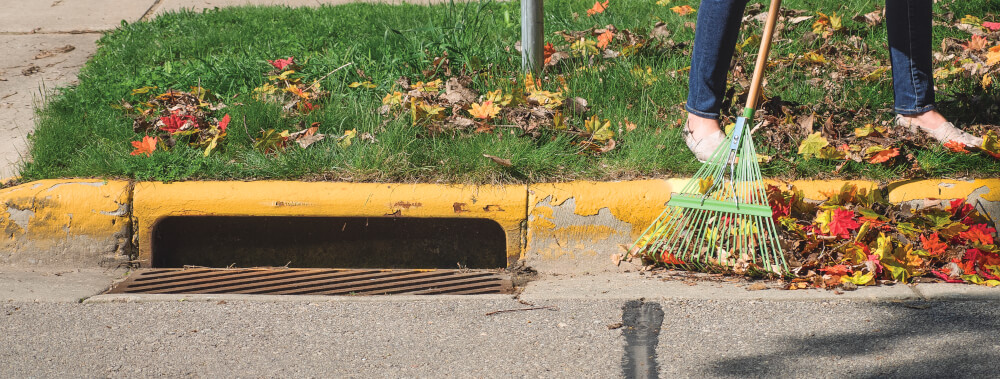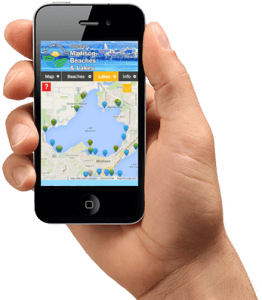Leaves & Yard Care
Proper yard care is a great way for homeowners to get involved. Learn more about how leaves can impact our lakes, what community partners are doing to improve leaf management, and what you can do to help.
Why are leaves a problem for the lakes?
Leaves release phosphorus when they break down, representing one of the largest sources of urban phosphorus pollution. When left in the street, leaves make a phosphorus-rich tea that washes down storm drains and directly into our lakes. It only takes one pound of phosphorus to produce 500 pounds of algae in our lakes!
Quick Facts:
- Over the course of the year, more than 50% of phosphorus in urban stormwater can come from leaves in the street
- In the fall, removing leaves from the street before it rains can reduce the amount of phosphorus in urban stormwater by 80% compared to no leaf removal
I want to manage leaves on my property. What are my options?
Here are a few ways you can handle leaves on your property. Any amount of leaves you can manage at home helps – even saving fuel and tax dollars for leaf collection.
1. Rake leaves from the street
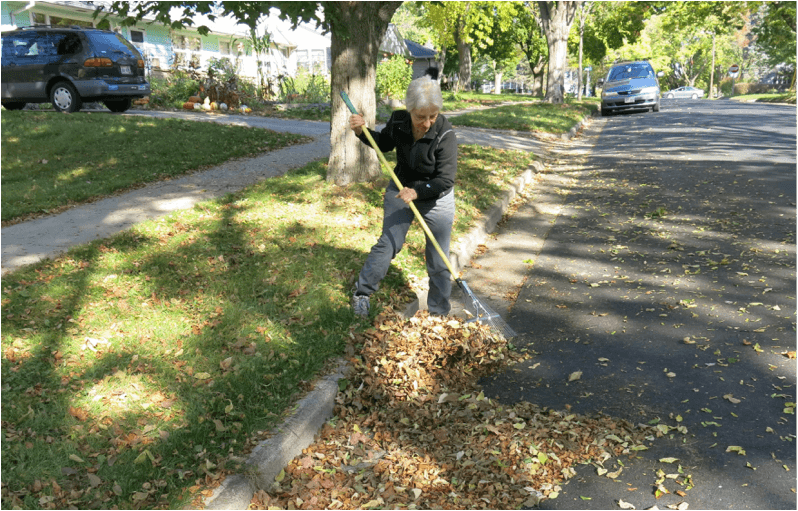 The best thing you can do to help is to rake leaves from the street on to the curb in front of your home. Every time you rake your yard, check if there are leaves on the street. Try raking leaves three feet into the street onto your curb to keep nearby street gutters and storm drains clear. Clean streets make for healthy lakes!
The best thing you can do to help is to rake leaves from the street on to the curb in front of your home. Every time you rake your yard, check if there are leaves on the street. Try raking leaves three feet into the street onto your curb to keep nearby street gutters and storm drains clear. Clean streets make for healthy lakes!
Note: If you live in an apartment or condominium, you’re not off the hook! Ask your property manager about their strategy for leaf management and encourage them to help our lakes.
2. Start backyard composting
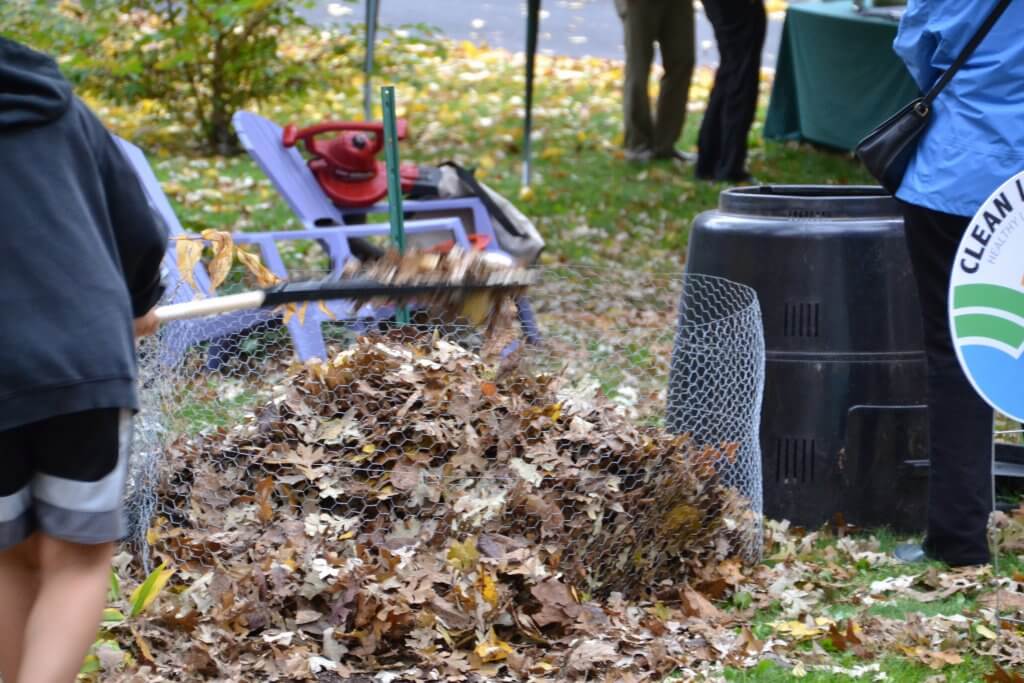 Why dump your leaves on the curb to have them hauled away like garbage? By doing so, you’re creating a potential source of pollution and risk damage to your lawn. Instead, consider starting a compost pile:
Why dump your leaves on the curb to have them hauled away like garbage? By doing so, you’re creating a potential source of pollution and risk damage to your lawn. Instead, consider starting a compost pile:
- Composting in Wisconsin Overview (DNR)
- Guide to Composting at Home (EPA)
- Getting started with composting
3. Use as garden mulch
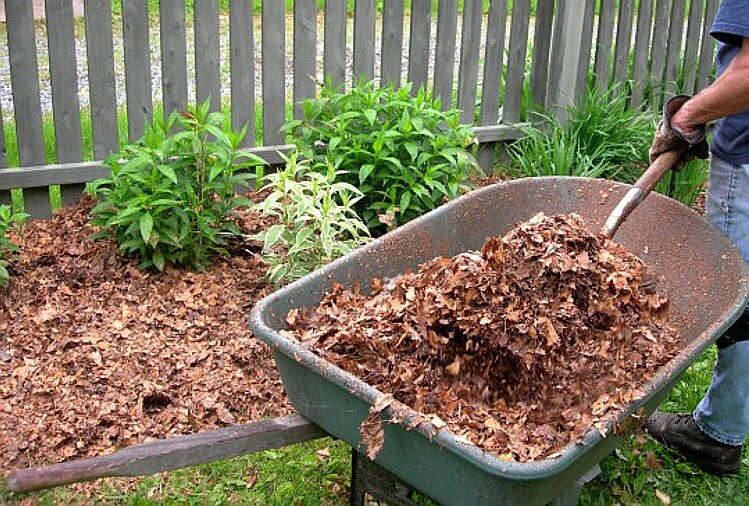 Using leaves as garden mulch is easy and saves you money. You can mow leaves on your yard and leave them in place to provide nutrients that keep your yard healthy. Mowed leaves can also be used around plantings as mulch.
Using leaves as garden mulch is easy and saves you money. You can mow leaves on your yard and leave them in place to provide nutrients that keep your yard healthy. Mowed leaves can also be used around plantings as mulch.
What is my local government doing to manage leaves?
Partners in Dane County are working together to keep our waters clean. Many communities offer curbside leaf pick up or free access to yard waste drop-off sites. However, keeping our streets leaf-free will require a shared effort.
Each municipality has a different approach to leaf management and streets crews may not always be able to respond in time to remove leaves prior to each rainfall. You can help by removing leaves from the street before it rains and encouraging your neighbors to do the same.
Visit the links below to see what your municipality does to manage leaves.
Villages
Leaves are part of nature. Why are they a problem?
Leaves are one of the largest sources of urban phosphorus pollution. Without streets, parking lots, and storm sewers, leaves would fall on soil and phosphorus would soak into the soil instead of going straight into our lakes and streams. When left in the street gutters, leaves release phosphorus into stormwater that easily washes down storm drains and directly into our lakes.
Aren’t leaves just a small part of the problem compared to agriculture?
Leaves are a significant source of urban phosphorus. In the fall, timely removal of street leaf litter can reduce the amount of phosphorus in urban stormwater by 80% compared to no leaf removal. We can all do our part to address water quality by managing sources of phosphorus runoff.
What else can I do in my yard?
We often get calls from homeowners wondering about lake-friendly yard care. A healthy yard is better able to absorb rainfall and prevent soil from eroding.
- Organic & Alternative Lawn Care (UW-Extension)
- Tips for pollinator-safe gardening (Xerces Society)
How can I learn more?
Partners in Dane County are working together on studies and pilots to improve local management and outreach efforts.
- Dane County Ripple Effects website
- City of Middleton Leaf Pilot (2016)
- Village of DeForest Leaf-Free Streets Pilot (2015)
- City of Madison USGS Leaf Collection Study (2012-2016)
- Wingra Watershed Leaf-Free Streets Pilot (2014-2015), part of the City of Madison study.
Search our website for something else:
